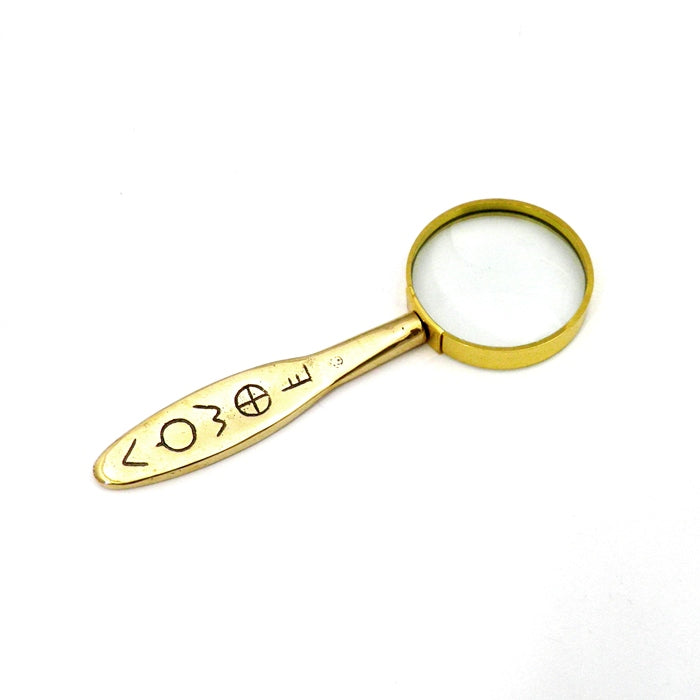Talismancharm.com
Greek Alphabet, Magnifying Glass
Greek Alphabet, Magnifying Glass
Couldn't load pickup availability
We created a magnifying glass in solid brass with letters from the Greek alphabet engraved on the handle. The letters of the Greek alphabet, which are one of the earliest surviving writing systems. It was a left-handed writing system, dating back to around the 8th-7th century BC. The letters engraved on the bookmark are inspired by local variations of the Greek alphabet, used in the Peloponnese, central Greece, Thessaly, Attica, the Aegean islands and cities of Ionia.
Weight: 139 g
Dimensions (LxHxW): 5 cm x 15 cm x 1 cm
Gross Weight: 325 g
Includes: Gift Wrapping - Description Greek & English
Region: Ancient Greece
Material: Brass
Date: 8th - 7th century BC
The Greek alphabet is the alphabetic writing system used to write the Greek language, since the 8th century BC. It probably derives from the Phoenician alphabet, which the Greeks must have encountered while traveling in the late 9th century BC in the eastern Mediterranean. In turn, the Greek alphabet became the ancestor of numerous writing systems of Europe and the Middle East, including the Latin and Cyrillic scripts.
The Greek alphabet is probably the first truly alphabetic script, as Phoenician was in syllabic form. In antiquity, the earliest form of letters was capital letters.
By the 7th century BC, all Greek city-states had already developed and used their own alphabet, each with its own local variations. The archaic Greek alphabet had a wide variety of local variations. All local alphabets were initially based on the 22 letters of the Phoenician alphabet, with the exception of the letter "samekh", which the corresponding Greek letter Ξ was missing from many. All alphabets also contained the additional letter Υ and later the new letter Ο was added.
From the various alphabets used in the western Peloponnese, in areas of Central Greece, in Euboea, in Thessaly, in Attica, in most of the Aegean islands and in cities of Ionia, such as Miletus and Ephesus, the classical Greek alphabet was completed.
Share




